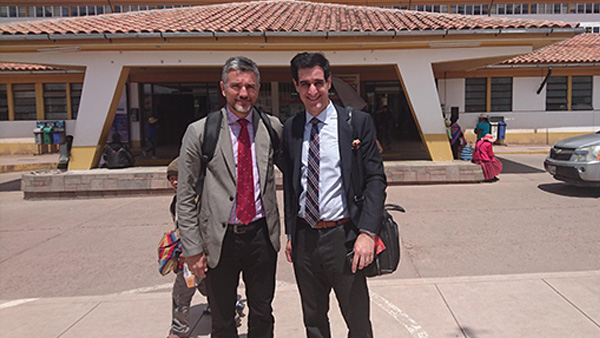For epilepsy’s toughest cases, brain surgery is often the last hope for patients.
About half of patients living with drug-resistant epilepsy, a form of the seizure disorder that does not respond to drug therapy, are candidates for surgery.
Until 2011, this intervention wasn’t even a possibility for epilepsy patients in Peru.
Epilepsy rates in the South American country are three times higher than those in Canada, attributed to limited access to perinatal care and cysticercosis, a parasitic brain infection caused by poor sanitation.
Despite the high prevalence, the country lacked formal epilepsy surgery centres, a gap in treatment that initiated a decade-long partnership between the Epilepsy Program based at Schulich Medicine & Dentistry and hospitals in Peru. The Epilepsy Program supports world-class research and teaching, training neurologists and neurosurgeons from around the world about complex epilepsies.
The unique collaboration led to the establishment of two formal epilepsy surgery centres in the country, an achievement documented in a 2018 article for Neurology.
“Collaboration is the key here,” said Dr. Jorge Burneo, a neurologist and professor with Clinical Neurological Sciences. “With the expertise we have at the School, it is important to teach and collaborate with other groups from around the world.”
Dr. Burneo got involved in his home country of Peru when the International League Against Epilepsy developed a program called ‘Partnering Epilepsy Centers in America’ to recruit physicians with formal training in epilepsy and pair them with institutions throughout Latin America.
“I wanted to be able to give something back to my native country,” he said. “I thought it would be great to be able to contribute my knowledge and expertise, and to share what I’m already passionate about.”
 Through the initiative, Dr. Burneo started making regular visits to Lima to train local physicians on video EEG, a diagnostic technique. The partnership soon expanded to include clinical fellowship opportunities for Peruvian neurologists and neurosurgeons at London Health Sciences Centre (LHSC).
Through the initiative, Dr. Burneo started making regular visits to Lima to train local physicians on video EEG, a diagnostic technique. The partnership soon expanded to include clinical fellowship opportunities for Peruvian neurologists and neurosurgeons at London Health Sciences Centre (LHSC).
Using the model in place at LHSC, the multidisciplinary team created guidelines to assess patients for epilepsy surgery. At this point, Dr. David Steven, a neurosurgeon and Chair/Chief of Clinical Neurological Sciences, joined the efforts to help set up the epilepsy surgery programs in Peru.
“Knowing that there are parts of the world where epilepsy surgeries are not a possibility, I wanted to help,” he said. “From an impact standpoint, the potential was there to help thousands of patients.”
From the beginning, Drs. Burneo and Steven emphasized a long-term, sustainable program with a focus on transformative education and professional development. With that in mind, the Canadian experts provided surgical training using the equipment available in the local hospitals.
“We wanted to have a long-lasting impact and create a model where we would no longer be necessary,” said Dr. Steven. “This was a partnership in the true sense of the word. Because the Peruvian neurologists and neurosurgeons are independent, they are not waiting for us to show up. They are also in a position to train the next wave of neurosurgeons to manage the programs for generations to come.”
 On their most recent trip, Dr. Miguel Arango, an anesthesiologist and professor with Anesthesia & Perioperative Medicine, accompanied the team. He mentored the Peruvian neurologists and neurosurgeons on performing an awake craniotomy.
On their most recent trip, Dr. Miguel Arango, an anesthesiologist and professor with Anesthesia & Perioperative Medicine, accompanied the team. He mentored the Peruvian neurologists and neurosurgeons on performing an awake craniotomy.
The progress from the inception of the surgery programs in 2011 to performing complex awake craniotomies is a significant step forward for the country. The very first patient the team in Peru operated on, more than eight years ago, remains seizure-free today.
“The success of these programs is strong evidence that with a dedicated, collaborative approach it is possible to initiate basic epilepsy surgery programs in countries with limited resources,” the team writes in the Neurology article.
The collaboration continues between Schulich Medicine & Dentistry and the two established programs in Peru, with ongoing opportunities for research and mentorship. Drs. Burneo and Steven are also looking to expand epilepsy surgery centres in Peru, as well as other South American countries, such as Bolivia.
“At first, I looked at this as something interesting to do,” said Dr. Steven. “Now I can look back and realize that we’ve really accomplished something remarkable. We’ve actually permanently changed the management of epilepsy in the country.”